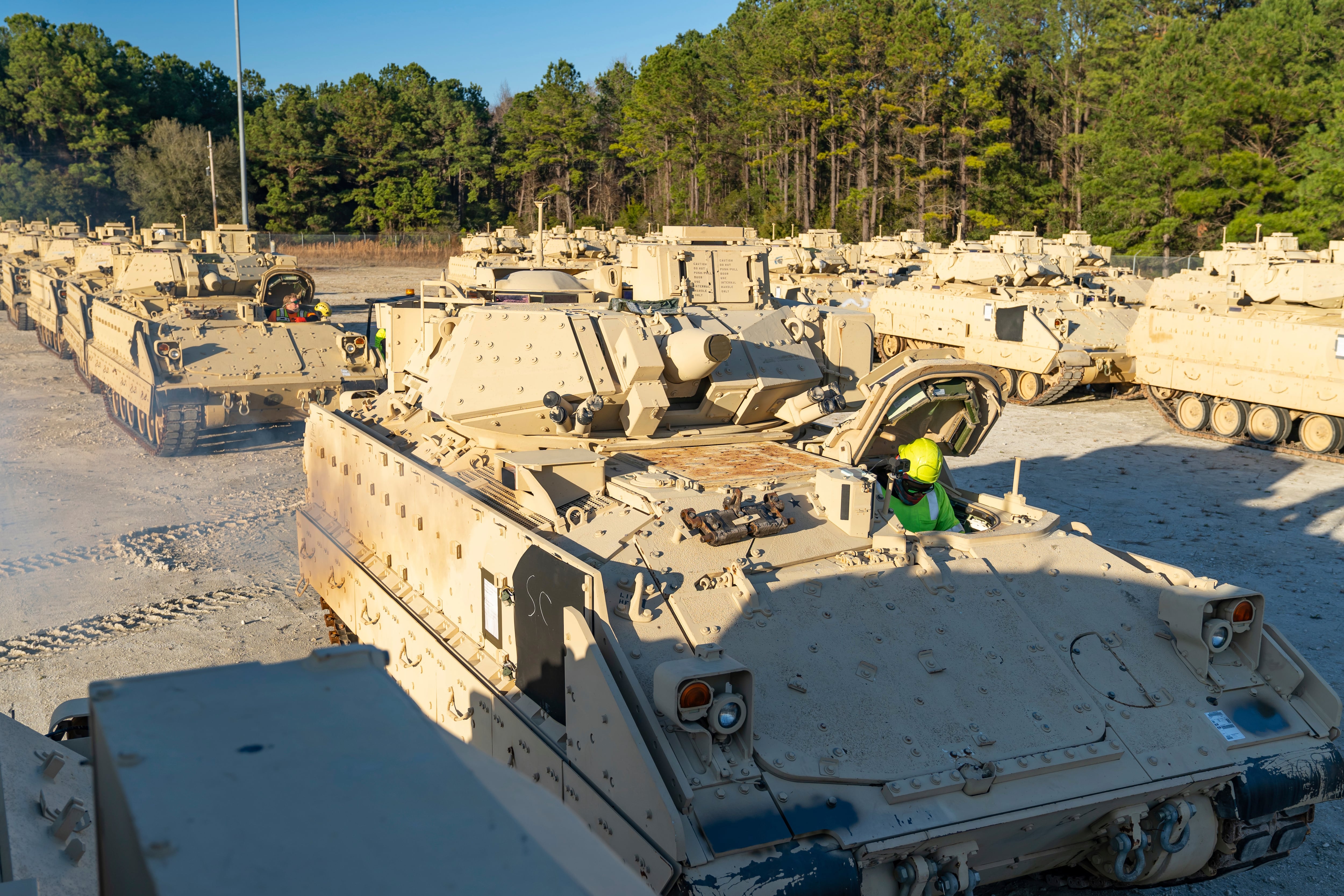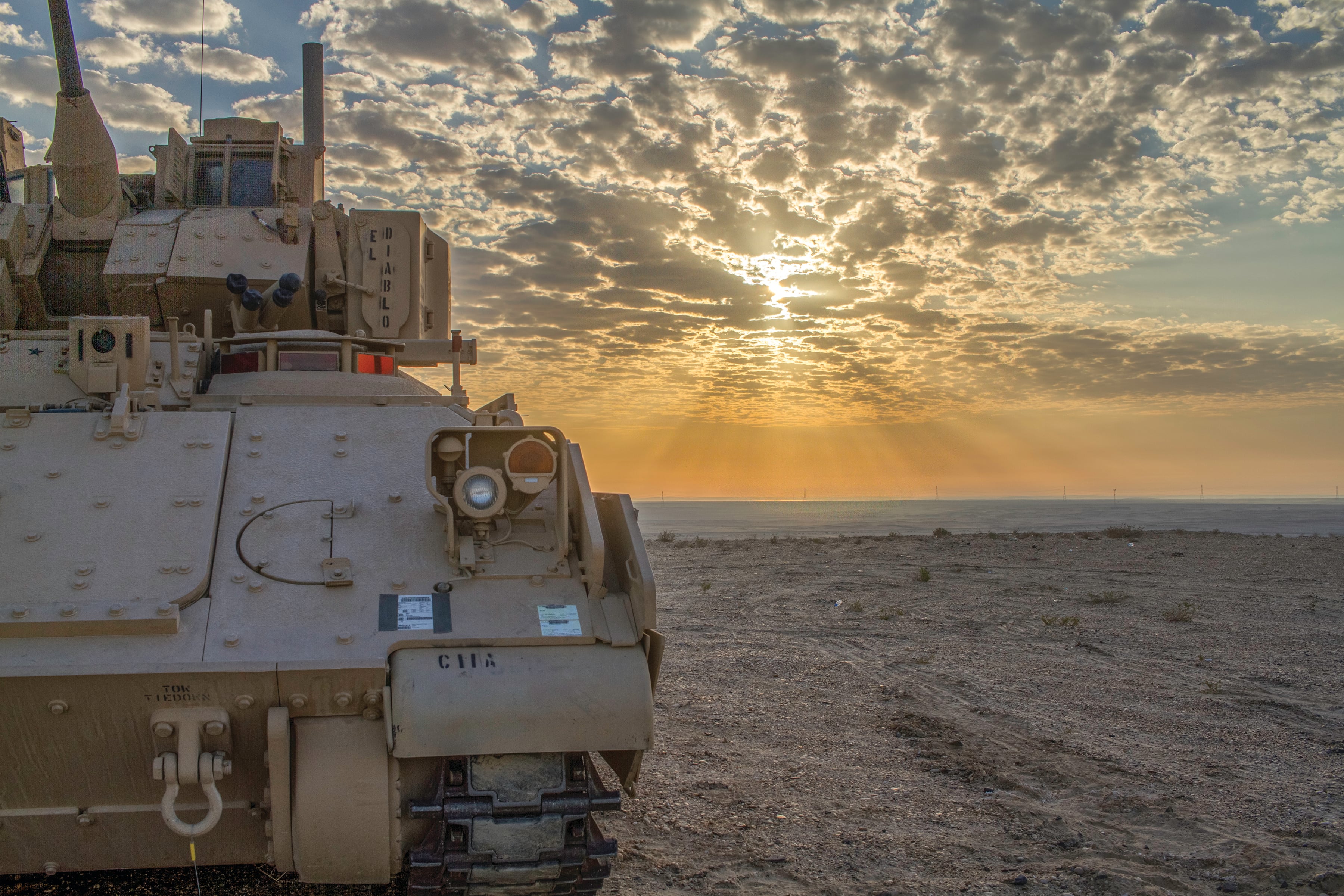DETROIT ARSENAL, Michigan — Two industry teams competing to design a Bradley Infantry Fighting Vehicle replacement have completed preliminary design reviews, clearing a hurdle ahead of the next milestone in 2025, Maj. Gen. Glenn Dean, Army program executive officer for ground combat systems, said.
American Rheinmetall Vehicles and General Dynamics Land Systems were chosen from a pool of bidders in June 2023 to continue into a detailed design phase of the XM30 Mechanized Infantry Combat Vehicle.
Both teams are designing a hybrid vehicle featuring a suite of lethal capabilities to include a 50mm cannon, a remote turret, anti-tank guided missiles, machine guns employed through an advanced third-generation, forward-looking infrared sensor, an integrated protection suite, kitted armor, and signature management capabilities as well as intelligent fire control, according to Army officials.
The total value of both contracts is approximately $1.6 billion; the overall program is expected to be worth about $45 billion, according to the Army.
The last preliminary design review wrapped up in August, and the service will have a quick turnaround to complete critical design reviews in order to begin building physical prototypes, Dean said in an interview ahead of the Association of the U.S. Army’s annual conference this week.
RELATED

“At that point [when] the design is final, all of the elements and parts are defined, and at that point the contractor is ordering all their material to build prototypes,” Dean said.
Prototypes will take 18 to 20 months to construct after the critical design reviews wrap up. Once prototypes are delivered, the Army will move into a test and evaluation phase with both competitors before deciding on a winner in fiscal 2027. The first vehicles are expected to be fielded in fiscal 2029.
The Army is moving on an aggressive schedule between completion of a preliminary design review and a critical design review, Dean said.
Such a schedule is possible because of the designs taking place in a digital engineering environment and frequent soldier touch points in physical and virtual mockups, Col. Kevin Bradley, who is in charge of combat vehicle modernization within Army Futures Command, said in the same interview.
“Having soldiers get in and actually see what the seating in the back looked like, how their evacuation drills would go, definitely was beneficial to both vendors in giving them feedback to help adjust designs to better suit what we were looking for in the requirements,” he said.
“I would say we’ve had everything from small user interface changes up to, in one case, at least a fairly significant structural change to the base design,” Dean said. “There are some fairly dramatic shifts, and this is the time to do them.”
American Rheinmetall Defense’s team includes Textron Systems, RTX, L3Harris Technologies and Allison Transmission as well as artificial intelligence-focused company Anduril Technologies.
GDLS is teamed up with GM Defense; Applied Intuition, a specialist in modeling and simulating autonomy for the automobile industry; and AeroVironment, which is providing its Switchblade loitering munitions for integration into the design. GDLS also continues to work with General Dynamics Mission Systems to incorporate networks, radio gear and cyber capabilities.
Jen Judson is an award-winning journalist covering land warfare for Defense News. She has also worked for Politico and Inside Defense. She holds a Master of Science degree in journalism from Boston University and a Bachelor of Arts degree from Kenyon College.




